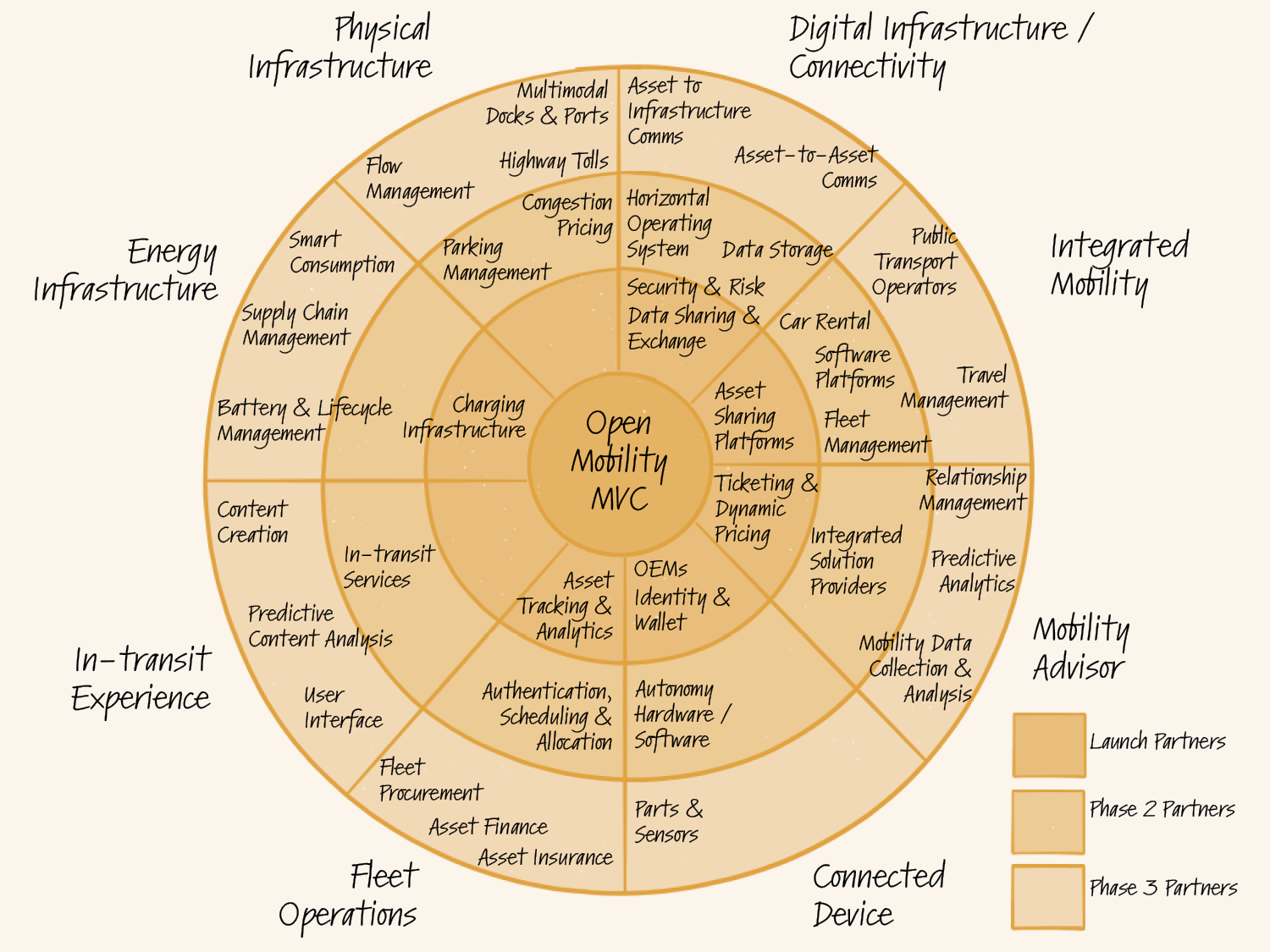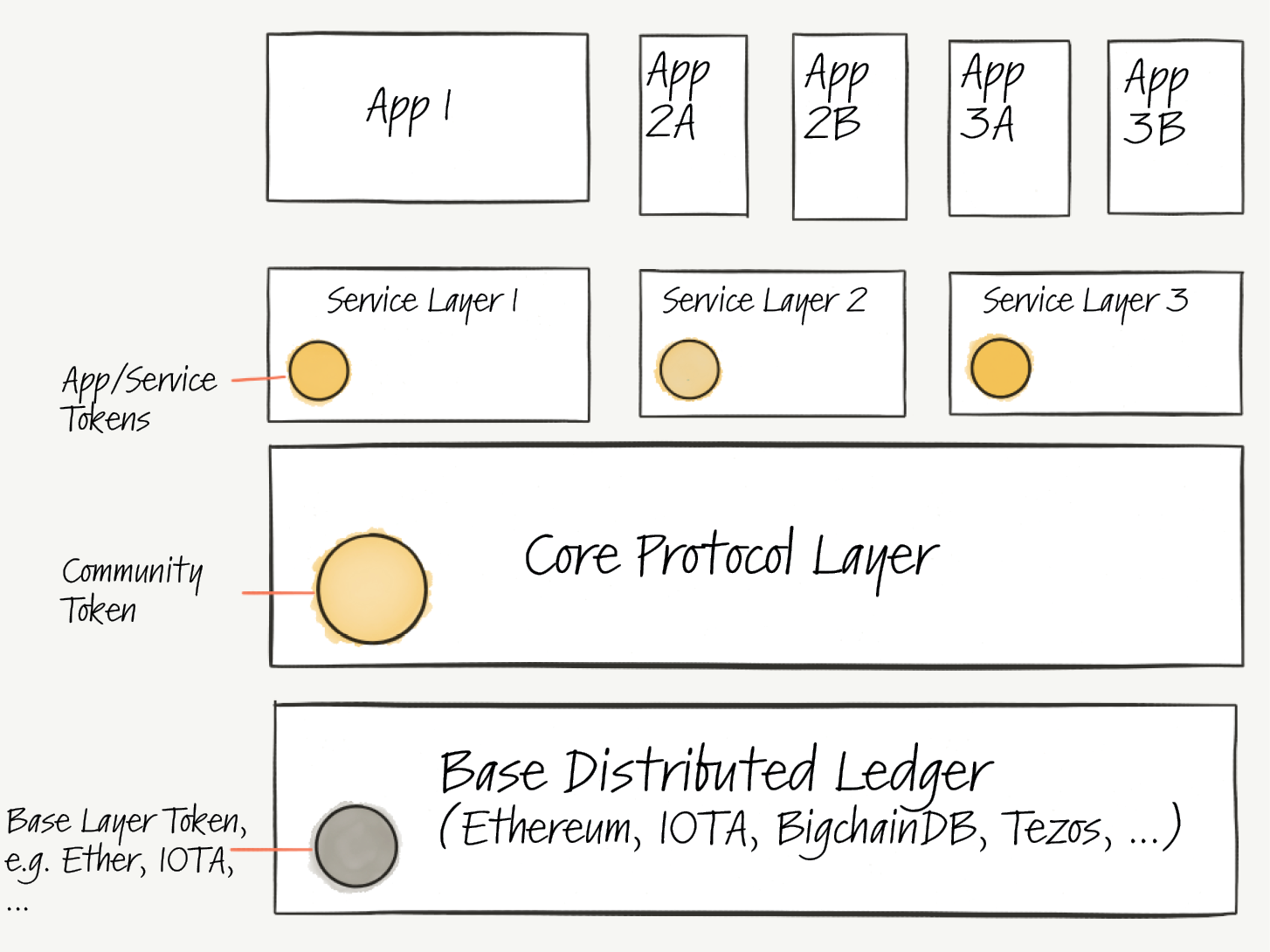This is a summary of our whitepaper which can be downloaded here.
With every emergent technology comes business innovation that changes how value is captured and delivered. For blockchain technology, token economies represent a new network-based crowdfunding model in which blockchain architecture locks in economic incentives. This model drives the future delivery of a decentralised protocol designed to enable services with new value propositions. The next era of the internet, Web 3.0, will be financed and built not by venture capitalists, but by the community itself.
As promising as this is, token economies will increasingly face one or both of the following challenges. First, many projects duplicate the open source infrastructure each needs to deliver value to their particular market segment. This happens either by forking or through the funding of new projects trying to solve the same problems other existing projects are already working on. Secondly, projects are built directly on general purpose protocols and are unable to optimally serve the needs of industry. It isn’t viable for a general purpose protocol to support the specific transactional and governance requirements of every industry. The implications of these challenges include inefficient capital investment, fragmentation of a scarce developer community, and a shift from collaborative to competitive strategies. Ultimately, this inhibits the ability to utilise powerful network effects and build sustainable decentralised protocols.
Introduction
Early redundancy and unnecessary competition are counterproductive to building successful token economies; we propose a new model: a Community Token Economy (CTE). A CTE is the activation of an inclusive token economy by two or more complementary entities that serve as the foundation for a domain-specific protocol that requires a Community Token. These entities can be start-ups or incumbents, and would each seed the token economy with unique resources, such as IP, network, distribution and more. Furthermore, CTEs will be industry specific and position itself for more appropriate competition against existing centralised markets.
A CTE provides a dynamic framework to incentivise collaborative behaviours early in the birthing cycles of these new digital economies. To be clear, CTEs are a governing and coordination model, and not a technology. It is meant to augment rather than replace generic protocols, blockchains or distributed ledgers like Ethereum or IOTA. By applying economic model innovation and strategic ecosystem development to crypto-economic design, we can kick start an open source, decentralised economy, drive network effects and generate more token utility – which we believe will make them more likely to succeed.
Minimum Viable Community
Rather than starting with technology, the initiation of a CTE begins with the formation of a Minimum Viable Community (MVC). An MVC is a partnership between 2-3 founding parties to co-create an inclusive industry-specific economy. Rather than each side creating their own competing and incompatible token-system, each contributes its unique strategic value to a joint crypto economy.
Through ecosystem mapping, a method of stakeholder integration can systematically take shape. This mapping presents as an Orbit Chart that positions the various parties and priorities for community success.
Figure 1 – Orbit chart for Open Mobility MVC
An example of how an Open Mobility Minimum Viable Community (MVC) might develop.

Home Planet – defines the small grouping of entities, including the initiating party, that is required to realize MVC as a meaningful point of gravity to pull others into its orbit.
Orbits – defines the stages of community roll-out before, during and after a community token sale. The outer reaches can extend to 3+ years into the future. The idea being the centre of gravity, that is the token economy being built, absorbs each ring over time as it grows making it harder for seemingly far off limits to resist its pull.
Zones – defines the stakeholder segments of community that need to be engaged to build gravity. Whilst they may be weighted differently they should all be covered here and be used to plan and importantly track progress.
Closest to the centre are a few core solution areas that are needed to kick-start a viable open mobility ecosystem. Solutions from all categories are needed to eventually build a long-term sustainable ecosystem, but the objective of the MVC is to identify the core pieces that are required almost immediately at launch. Here solutions within physical infrastructure and in-transit experience can wait until phase 2 partners are engaged to enable scaling and growth. Critical launch partners include OEMs, security & risk, asset sharing platforms that enable the project to reach customers quickly, safely and cost-effectively.
Meta Economy
The best way to conceptualise a Community Token Economy is as a larger meta economy that requires a native token and a shared data layer to build applications. This native token lies in the core protocol layer, which sits on a base distributed layer, like Bitcoin, Ethereum or IOTA.
Figure 2 – A Community Cryptoeconomy

The native token is a Community Token that should offer clear utility to access a growing number of services within a particular decentralised domain. The economic and governance principles should be programmed into this community token, to align incentives amongst the actors in the economy. This Community Token is the token that binds the entire CTE community; its value aligns the interest of all community members.
The function of the Community Token can evolve throughout the lifetime of the CTE. At the inception of the CTE, the core protocol is yet to be designed and built. In the early stages, it can be used to reward all types of contribution to the core protocol and organisation like design, development, marketing and governance. As the core protocol is developed, additional properties are added to it, reflecting the shared principles of the community. Each new version gets deployed after approval through the chosen CTE governance structure, giving the community control over the development of the token itself.
Applications and services built on the core protocol form an important part of the ecosystem, as well. The founding partners will likely have their apps, either pre-existing or developed during the CTE lifetime. Additional apps and services will be added as the community grows and attracts more projects to its orbit.
Each of these apps is smaller sub-communities in their right for which the same dynamics are at play. While it’s ideal to have the entire community token economy running under a single Community Token, the reality is some of the apps may have already been tokenised or would have plans to. Therefore, we believe it is important to scenario plan App Tokens into the CTE model. These App Tokens would interact with the Community Token to reflect the financial relationship between these tokens. From a technology standpoint, this can be facilitated by programmable smart tokens with embedded price discovery.
To align their specific incentives towards the development of the app, an App Token is issued for each. Here the same iterative model might be applied as for the core protocol: initially, the App Token is relatively simple in structure. Later on, when the app and its token model have crystallised, it gets additional properties. If the design process concludes that the app shouldn’t use a token at all, the App Community Tokens can be converted back to Community Tokens of the core community.
What’s Next?
We’re excited by the idea of open-source, community-driven decentralised protocols designed to compete against centralised markets. By enabling true collaboration that is open to both startups and corporates alike, the model can generate tremendous value. Furthermore, over the long run, we believe customers will ultimately respond to this value and opt out of current systems for a decentralised option.
The Outlier team will continue to work with the Imperial College London to experiment around economic model innovation and strategic ecosystem development, as we believe there’s a tremendous amount of value to be captured and delivered through Community Token Economies. In fact, we know of one already…
Stay tuned for a very exciting token sale announcement of the first Community Token Economy in the next couple weeks.

